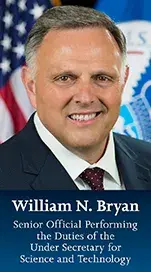Everyday across the nation, our first responders answer calls for help. We’ve all witnessed the heroic, coordinated efforts to respond to the California wildfires, the heartbreak of all-too-frequent active shooter incidents, and the daily dedication of law enforcement, fire fighters, and emergency medical services (EMS) to keep our communities safe and secure.
 Through it all, most of us rarely consider the technology first responders use to fulfill their mission and how that technology must work and integrate seamlessly into their operations to help them face increasingly dangerous threats.
Through it all, most of us rarely consider the technology first responders use to fulfill their mission and how that technology must work and integrate seamlessly into their operations to help them face increasingly dangerous threats.
DHS S&T’s Next Generation First Responder Apex Program (NGFR) works with public safety agencies to ensure the technology we research and develop for responders is not only innovative but has the capability to integrate with agencies’ existing technology. Beyond simply aiding responders in their mission, this technology can ultimately keep our responders better protected, connected and fully aware.
Over the past year, DHS S&T has worked with local Houston, Texas, public safety agencies and the U.S. Coast Guard to assess some of their technical needs. We asked these responders what threats kept them up at night, what capabilities they wish they had, and how we could improve upon their existing technology. Working with the agencies that helped Houston survive Hurricane Harvey, their priorities were improving operational communication, operational coordination, responder safety and overall situational awareness. The NGFR program team partnered with industry and worked tirelessly to address these concerns.
This week, DHS S&T heads to Houston where we’re working with public safety and industry partners to demonstrate the operational value of cutting-edge first responder technologies during the NGFR – Harris County Operational Experimentation (OpEx). Using open standards and guidance from the NGFR Integration Handbook, the OpEx will evaluate how DHS-developed, commercial, and existing first responder technologies will integrate during a multi-jurisdictional coordinated response to a HAZMAT scenario at the Port of Houston.
The goal of this OpEx is to advance first responder innovation by showcasing the promise and potential of the next generation first responder. To do this, DHS S&T and partners will assess the integration of Internet of Things sensors into advanced situational awareness platforms, investigate the technical requirements of a coordinated response during a disaster, and demonstrate how integrated solutions deliver greater operational impact for public safety agencies across the nation.
This is a great endeavor and could not have been accomplished without the time and dedication from our Houston-area and Harris County public safety agency and industry partners for their time, dedication, and determination for a successful exercise. Homeland security begins with hometown security. It is partnerships like these that help us show the world the future of first responder technology.
